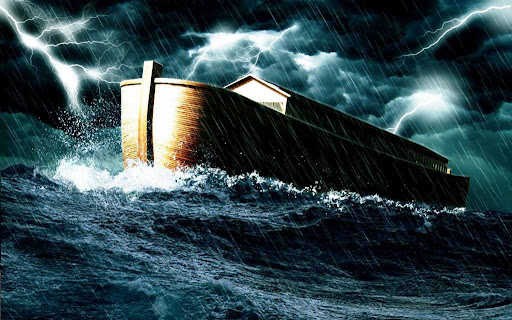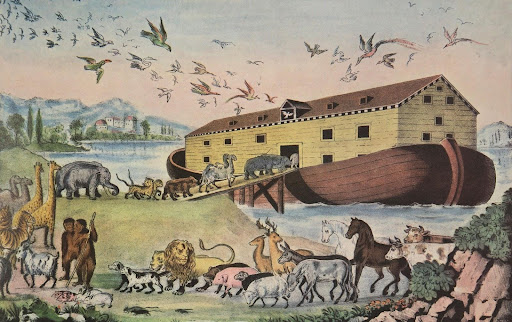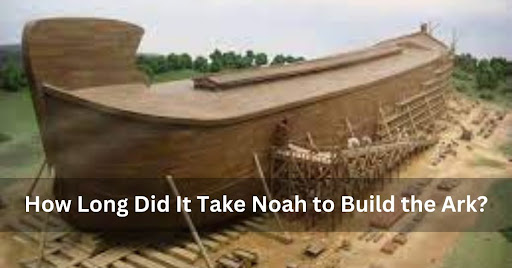Everyone who is into spirituality and reading the bible must have one question hitting in their mind that is “How long did it take Noah to build the ark” as there is no exact number mentioned about the time frame he invested to complete God’s order.
However, with some calculations and reading about some genesis we can give the true answer to this question. So, read the entire article to know how a selfless, honest, and obedient follower of God gave all his faith and hard work to make the ark without asking even a single question from God. Without any delay, let’s begin!
Who is Noah in the Bible?
Noah is a follower of God in the Bible and the name’s meaning is “rest”. His father, Lamech, gave him this name with the hope that one day he would free the family from tough labor work, weak economic conditions, bad agricultural land, and other difficulties that the Lord had given them.

Talking about his character, he was the most selfless and genuine person in the world. Not only that but he also had so much trust in God’s decisions. His closeness with God is very evident when he indulged all his time to build an ark without even a single drop of rain. Noah, dedicated his life to fulfill God’s will and in completing the tasks given by him.
How Long Did It Take Noah To Build The Ark?
Making a humongous ark alone is not something to be completed in just one or two years but it might take more than 100 years because of the lack of resources, technicality, and manpower at that time. But doing some mathematical calculations can help us know exactly how long did it take Noah to build the ark.

So, according to Genesis 5:32 of the Bible, Noah was around 500 years old and at that time he had 3 sons. Whereas as per Genesis 7:6 and 11 of the Bible, he was around 600 years old and during that time, the flood had just begun. So, the difference between the age of Noah according to both Genesis is 100 years old which is exactly the time he took to build the ark.
What is the description of Noah’s ark?
In the Bible, God had explained all the details to Noah about the appearance and looks of the ark that he wished to get done. The description by God says that Noah is supposed to build a large boat with cypress wood. It should also be waterproof from the inside out with tar.

After this, he needs to make stalls and a deck in it. The complete boat should be 450 feet in length, 45 feet in height, and 75 feet in width, specifically. God also mentioned that he wants a massive 18 inches opening from the roof which leads to the boat.
Not only that but further details include a glass door and three decks in the boat. As per many historians, the ark had a rectangular shape and three layers about which the details are not particularly shared in the Bible.
Who could enter Noah’s ark?
After the complete construction of the ark as per the specifications given before, God also shared the details of individuals or living beings who were allowed to step into the boat. So, in Genesis 7:1-3, God stated to Noah that he is the only righteous person on the earth and is supposed to enter the ark with his loved ones and seven pairs (male and female) of different animals and birds.

The purpose of giving these conditions was to save every species living on the earth and protect them from vanishing or dying in the flood water. So, at last, Noah took his family and seven pairs of animals and birds in his boat and went abroad which eventually protected them from flood water.
Conclusion
Above we shared a brief guide answering “How long did it take Noah to build the ark” which might have helped you in knowing the complete concept and aspects. This story teaches us how we should believe in God’s decision and thank him for giving all that we have. It’s true that sometimes we go through a very rough phase but faith in God can help us overcome that effortlessly.
Noah won in his life and the reason was his honesty, realism, kind behavior, politeness, and closeness with God. A spiritual or holy book has a lot to learn from and all it demands is to find out the true meaning behind each sentence written there. For any further queries, please connect with us through the comment box. Thank you for reading!
Frequently Asked Questions
Q1. What lesson does the story of Noah and the ark give?
Ans. The major lesson of this complete story is to have faith in God and obey his decisions without questioning him and the plans he has already prepared for all of us.
Q2. What was Noah’s age when he built the ark?
Ans. As per Genesis 7:6 and 11 of the Bible, he was 600 years old when he built the ark with his dedication, love, and hard work to fulfill God’s will.
Q3. What was the size of Noah’s ark?
Ans. It was 450 feet in length, 45 feet in height, and 75 feet in width, specifically. Apart from that, it was rectangular in shape and had glass doors, rooftop openings, and three decks as well.
Q4. How long did it take Noah to build the ark?
Ans. Making a humongous ark alone is not something to be completed in just one or two years and it took Noah almost 100 years to complete the construction of the same as per the specifications given by God.
Q5. Who is Noah in the Bible?
Ans. Noah is a follower of God in the Bible and the name’s meaning is “rest”. His father, Lamech, gave him this name with the hope that one day he would free the family from tough labor work, weak economic conditions, bad agricultural land, and other difficulties that the Lord had given them.






